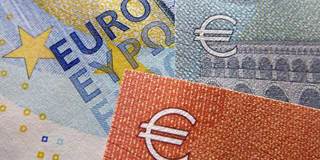Our current methods of calculation treat so-called helicopter money – the injection of funds into the economy by the central bank – as a temporary increase in the monetary base. The change is, in fact, permanent, with important implications for fiscal policy.
LONDON – In recent years, the global economy has been plagued by inadequate demand and the rising risk of deflation. Central banks have responded with a range of unconventional measures, including quantitative easing (QE) and negative interest rates. Today, however, there is a growing consensus that the efficacy of monetary stimulus has reached its limits. Further efforts to support economic recovery will likely require fiscal interventions, such as so-called helicopter money – the injection of funds into the economy by the central bank.

LONDON – In recent years, the global economy has been plagued by inadequate demand and the rising risk of deflation. Central banks have responded with a range of unconventional measures, including quantitative easing (QE) and negative interest rates. Today, however, there is a growing consensus that the efficacy of monetary stimulus has reached its limits. Further efforts to support economic recovery will likely require fiscal interventions, such as so-called helicopter money – the injection of funds into the economy by the central bank.